#Hannah Ewens
Text
Rolling Stone UK, March 9, 2023
After a decade of feeling unexcited after the critical response to her debut album Born to Die, the greatest American songwriter of the 21st century is finally inspired about her career and life again. Rolling Stone UK meets her in LA to discuss the “overculture”, romance and her new album, Did You know that there’s a tunnel under Ocean Blvd.
Lana Del Rey had not felt enthusiastic for more than a decade. Her career wasn’t animating her like it used to. Everything felt like an endurance test. This went on for a terribly long time, she says, but it’s over now. It ended three months ago, actually. She and her younger brother Charles, with whom she is highly energetically in tune, went to a mall in the Valley with their sister Caroline’s baby. It was a slow day of total serenity. They breezed through the aisles with their face masks on, invisible to people. After they pulled out of the parking area in separate vehicles, Charles called her and said, “Do you feel like something’s different?”
And Lana Del Rey took an emotional and metaphysical reading of her atmosphere and said, “That’s so funny. I really, really do.”
There was no obvious logic to why this change occurred. “That’s the funniest thing about life,” she tells me in her breathy Old Hollywood voice, sitting on an outdoor sofa in a backyard in Los Angeles. “You can pray and pray and pray to feel unburdened, but for no explanation for why and when, all of a sudden everything lifts.”
Del Rey’s persistent lack of excitement began with the scathing critical reception of her 2012 debut album, Born to Die. Despite its hit status with the public and immediate cult relevance to fans, the hip-hop-inspired orchestral pop album was initially mis-assessed by music journalists and bloggers. Her detractors said she was a hack, a fraud, a rich kid whose entire identity was a construct of a major label and her management. Last-minute changes to the album’s production altered it drastically, which didn’t help in framing who she was. “I was like: ‘This sounds really, really different now. Ballads sound like pop bangers.’ For that reason, instead of being assessed as a more left, thought-based, diaristic or whatever artist, it was assessed on a regular level, which was challenging,” Del Rey recalls. “Having such a heavy critique makes it harder to progress in a cheerful way.”
Her ideas were before their time and heralded a new era of alt-pop where Lorde, Halsey, Sky Ferreira and the next generation’s biggest pop star, Billie Eilish, emerged young, moody and sad. Maybe if some people her own age — Del Rey was then 27 years old — had reviewed and written about her, it might have been different, she thinks. That’s not to say that some critics couldn’t recognise her distinct star power. In an article in the Guardian — one of many that circled the unimportant question of her ‘authenticity’ — a pop-culture magazine editor defended her, saying, “I think she cares about the art that she is creating. I don’t think that’s fake at all,” and adding that, “Lana Del Rey can go anywhere she wants to go. She’s going to one day be the cover of Rolling Stone.”
The year of the album’s release, Del Rey left New York, the state she grew up in, for LA to escape the media and people on the street who treated her with visceral negativity. Experiences and encounters throughout her mid-twenties to mid-thirties further compounded the feeling that the world was not reflecting how she felt about herself. “It was like being in upside-down land,” she remembers. The driving impulse behind her work was no longer self-expression, which was true of that debut and, to a dwindling degree, her follow-up, 2014’s melancholic, stripped-back Ultraviolence. “It was not about anything other than surviving and trying to add a little bit of glamour and explanation of how I planned to get through some of the stuff I was singing about,” she says. In the case of Ultraviolence, that was contemptuous romance, being the ‘other woman’, isolation and loss. Later, it would be co-dependency, passivity in relationships, fame and her complicated connections to men, her mother and America.
As Del Rey explains how she regained her former lust for life, she wonders in real time if the way we currently relate to each other more positively around mental health and trauma could have contributed. “It’s almost like no one can do any wrong, unless you’re Kanye talking about Nazis, which is, you know, a problem. But other than that, you can kind of be like, ‘Well, when I was ten, a tree fell and ever since then I haven’t felt that I could walk to the store…’. Everyone has these nuanced but specific stories that are so universal to people, and I think the culture shifting and softening had something to do with it, without me knowing about it.”
It’s a good thing because Del Rey was really wondering, ‘Where’s the regeneration period?’ Finally, she beams, after 11 years she is excited again.
Meeting Lana Del Rey in person is strange given the degree of iconography around her. She’s not in monochrome or sepia tones, nor is she wearing one of her favoured white dresses complete with palpable A-list aura. Instead, you have the uncanny sense of experiencing a deceptively understated human being like a David Lynch or Joan Didion or Patti Smith: an artist who either created a world, documented the world or really lived in the world. If you’re Del Rey, you simultaneously and prolifically do all three.
It’s mid-afternoon a few days before Valentine’s Day. I’m in the garden of a modern West Hollywood home seemingly made of stone, glass and pure light. Del Rey is exactly as any fan obsessed with her everyday paparazzi photos would hope. When she steps out through the patio doors for our interview, she’s dressed in a white V-neck, brown zip-up hoodie and yoga pants, bare-faced except for light kohl and eyelash extensions and with her long brunette hair down like a gorgeous off-duty soccer mom. She juggles a red vape, the keys to her truck, a venti Starbucks cup and an iPhone she smashed on the way here. In short, this is the most normal genius you’ve ever seen.
Del Rey moves as she speaks, with the mannerisms of a 50s luminary transported to a world of Brandy Melville, Sephora and Instagram. Her answers to questions are elusive and seem to curl and drift away like a wisp of smoke, which only underlines the fact that we don’t know much about her. She’s funny in the unsanitised and undecipherable ways your favourite creative friend would be if they were famous, like when she tweeted Azealia Banks, the rapper who started a feud with her: “U know the addy. Pull up anytime.” Or when she did an Instagram live from a Denny’s restaurant with her then-boyfriend as he gave presidential election updates to her and her fans. Or, if the rumours are to be believed, when she paid for a billboard to promote her upcoming album in an ex’s hometown — and only that town. Her casualness is at unambiguous odds with her image in photoshoots and music videos — the coiffed brunette housewife meets movie star — because she’s predominantly a songwriter and, since the release of 2019’s ambitious state-of-the-nation folk-pop album Norman Fucking Rockwell!, widely considered one of the best currently working today.
Daily life for Del Rey is just as basic and uncomplicated. Her friend and the producer of some of her most recent and best work, Jack Antonoff, is a constant witness to this. “Lana is in her truck at a gas station in LA, thinking and writing some lyrics, FaceTiming me, going to visit her friend, going to a different gas station, just sitting in the parking lot in her truck and thinking. It’s not a ‘bit’, that’s not a character,” he says. “People often don’t understand this about her, because so many people are playing characters these days. She’s just a wild soul.” As she said in an interview with Billboard a few years ago, when the muse takes her, she’s writing, but when it leaves her alone, she’s just in Starbucks, talking shit with her friends.
The mystical ordinariness of Lana Del Rey has been heightened by the fact that she decided to escape the “overculture” sometime in 2021. That year she announced she would be leaving Instagram to focus on her creative projects. She continued to use a private Instagram account, where she posts to the two million fans who didn’t miss the brief periods it was made public and accessible. The idea of an overculture — as coined by psychoanalyst Clarissa Pinkola Estés to mean the dominant culture we try to navigate without being over-assimilated into, thereby losing our unusual talents — was presented to Del Rey by her psychic Tessa Dipietro, who she sees weekly every Thursday. “I was talking to Tessa about feeling that there just wasn’t really a place for me to land, physically and psyche-wise,” she says. “I think if you’re a singer and people’s opinions of the work change so many times, you kind of realise: OK, there’s something to be learned from what you hear. At the same time, I’m definitely not one who thrives from outside validation, other than from a few people. It was very important to me to not have any influence from the outside culture that didn’t resonate with me. I always knew that I was going to do something else as well, aside from singing. To be more connected to what that path was going to be, I just needed to tune in more to my gut.”
By retreating, she believes she has begun to see the culture more clearly. Her albums have followed suit, increasingly humorous and observational in their commentary. Meanwhile, regardless of genre, her sound has distilled into something that is pure Lana: classic and glamorous with her trademark airy, theatrical vocals. She found a fellow partially off-grid companion in Antonoff. “Jack Antonoff and I are super similar in the way we know about so much that’s going on culturally, but we have no idea how. We definitely don’t read that much about it or hear that much about it, but all of those turning points in culture, somehow we’re always aware,” she explains. Often, she and Antonoff will sit together in the studio and discuss what they’re doing to try to survive the negative waves of trends in tech, self-promotion, music and society. “I think even if I was in a remote area, I would always know what’s going on and I’ve always had a little bit of an intuitive finger on the pulse of culture,” she continues. “Even when I started singing, I knew it wouldn’t completely jive right away.”
A spiritual instinct is ever-present in Del Rey, the person. As soon as she sits down, we’re laughing about astrology and the time she tweeted her birth time and everyone realised — along with her — that she’s a Cancer, not a Gemini. “Once I had a thousand dollars, I bought this beautiful Gemini medallion which is no longer relevant to me,” she hoots, clapping her hands together. She’s so impressed with her regular psychic that every time someone tells her that she must be proud of her music, she thinks, “‘You should see what these people in the wellness community can do’ — especially in LA, it’s the mecca.” Singing is a talent too, but psychic abilities to her are magic. “It’s so validating when I meet someone like that because it’s very affirmative that there’s so much more going on.”
This fascination with the otherworldly began when she was young growing up in Lake Placid, New York. “I had fun playing sports and meeting new friends, but I was concerned about why there were no television shows or talks from people and parents about where they thought we came from and why they thought we were here. It deeply troubled me from the age of four,” she remembers. “So, my parents did have their hands full with a lot of esoteric questions. I think that’s just a predisposition.” Attending a Catholic elementary school only encouraged this search for knowledge, as did her philosophy class at age 15. In the mid-00s, she went to Fordham University in the Bronx to study for a degree in philosophy with a specialism in metaphysics. “I tried to get as many questions answered in four years as I could,” she says, sagely. “And then I was taught that philosophy was a study of questions, not answers. There were no answers, which almost made things worse.”
Plenty of girls who were drawn to the idea of being looked after by a divine plan grow up to become women who exist with the exclusive purpose of knowing an all-encompassing romantic love. An impassioned relationship offers escape from the greyscale existence of living out the complicated family dynamics they typically grew up with. Del Rey announced herself as one of these women with her first artistic statement: “They say that the world was built for two / Only worth living if somebody is loving you.”
That first single ‘Video Games’ captivated restless listeners with its repeated, self-abandoning call of “It’s you, it’s you, it’s all for you”. Of that sentiment Del Rey can only say, “We were in a town of 600 for most of my life, so that seemed like what the trajectory was: school, junior college, trade school… get married?”
If you made a Venn diagram of people who narrativise their pain to survive and those who make a man the protagonist of their lives and encourage his self-mythologising, you’d find Lana Del Rey acolytes in the intersection. For obvious reasons, young women and gay men were largely possessed by the dark star of Americana when she debuted. Her early music synthesised the all-consuming concerns of my late teens and early twenties: seeking out money and nurturing from men, the ways in which sex (and the withholding of sex) was weaponised and how I resented and desired that, the exhausting and obsessive project of love that could be so easily dismissed by an idiot playing video games. In the female empowerment era of the 2010s, Del Rey represented the pleasure and fun of being a woman but also the indignity of being one when you believe romantic love will solve any material or emotional problem.
When I mention this adoring cohort of fans from the Born to Die era, Del Rey responds with a breathy gasp: “I thought it was going to be for the boys! But again, it’s funny how it turned out to be the opposite. What an amazing lesson to foray into your people: The Girls.” Her eyes widen conspiratorially. “Love the girls. Girl’s girl. How awesome is that? But no, I definitely wrote Born to Die for the boys.” A big laugh from Del Rey at how ironic this is. “I mean, if you listen to it, it’s kind of…” This impression of herself she does almost inaudibly: “Pick me! Listen to me!”
From Ultraviolence onwards, male and female critics accused Del Rey of glamourising abusive relationships. Meanwhile, other women — including Del Rey and her fans — were living out those common painful or toxic relationships. “The one thing I’ve never been spared from is having these normal, somewhat contentious relationships,” explains Del Rey, punctuating thoughts with raised eyebrows or a pointed tone. “It’s not like if you become a singer, when you date people, they feel like they have to be nice to you because if they’re not, maybe they’d be called out. That never happens. They’re still themselves completely. And I think that’s why some people might call some of my stuff polarising, because either you’ve been in a contentious family dynamic or interpersonal relationships, or you haven’t. So, if you haven’t you might use the words or phrases I’ve heard like ‘feigning fragility’, or ‘glorifying being submissive’. OK. Maybe it’s also just trying to see the light at the end of the tunnel?” To bring these narratives into a musical context and make them sonically depressing or the accompanying visuals unappealing wouldn’t work for Del Rey. “You’re writing what happened but you’re also trying to lift it up a little bit, maybe melodically in the chorus,” she says.
If emotionally abusive relationships are all you’ve ever known, there are relational lessons that have to be completed to proceed to healthier dynamics. That’s probably why Del Rey’s songs are increasingly self-possessed and full of humour about these relationships (“God damn, man child,” she practically winks to us as she opens ‘Norman Fucking Rockwell!’). Often these lessons come directly from specific people, Del Rey says, referring to a relationship with one particular man: “The lesson was so shocking and it didn’t even really take the sting out of it. But I realised only that person with that particular look and stature and cheerful disposition that people considered him to have — that almost made me look like I wasn’t the positive one — only that kind of person could’ve brought me to my knees in the way that I needed to see what else I could add to my life to have a baseline foundation so that I could always come back to myself.”
In a poem from her first collection, Violet Bent Backwards Over the Grass, she describes desperately travelling to an AA meeting, knowing that she must leave her unpleasant relationship with a secretive man. She cries to the women and rehab teens while she tells her story. Del Rey ends ‘Thanks to the Locals’ with the lines: “I don’t have a pretty couplet to give resolution to this poem / nothing very eloquent to say / except that I was brave / and it would’ve been easier to stay”.
This was completely autobiographical and it’s amusing to Del Rey that no one knows she and this man were in an on-off relationship for years because they were never pictured together. “There’s also a lot of carnage that can come from being the partner to the person who is the funniest, sparkliest bar fly in the room,” she says of this relationship, laughing when she adds, “Now I’m like, ‘Get your sparkle away from me.’” She considers this person briefly, looking across to the swimming pool that takes up most of the backyard. “Everybody wants you…” Which is funny, she says, because you’d think as a singer that everyone would want her, pay her attention, not her partner. “That’s probably why I am interested in those kinds of people because it’s never about me in those cases, it’s always about them. And I love that because I don’t have to think about what people are thinking.”
The conversation moves towards our generation’s current inability to maintain a relationship. I ask if she thinks this is less because our ideals around marriage or commitment have changed and more because we’re conscious of ourselves and how we evolve which makes it harder to meet people and stay together for more than…
“…a year,” she says, finishing my sentence. “I never understood the saying ‘timing is everything’ but I get it now.” I suggest that you can torture yourself wondering if the timing had been right, you’d be together still. “That’s my whole thing. I’ve literally in the last couple of months left that whole question on the back burner. Because it would bother me.”
The metaphysical and the romantic are entwined in her mind. A recent relationship she had with someone entrenched in their own personal problems comes up and Del Rey describes the mysterious way the question of whether to go or to stay in a partnership can manifest change. “I was laying on the grass and I was so pleased with myself because I was committed to this idea that I was like, ‘It doesn’t really matter, things don’t have to be traditional or perfect, you love him, that’s fine,’” she recalls. “And as I committed, he came home and was like, ‘I can’t do this anymore.’ Tessa always says as soon as the person who is somewhat ambivalent tries to put two feet into the relationship, if it’s not right the universe has a way to sweep both people out immediately.”
So, when I ask why the overarching theme in her work is romantic love, the answer seems so obvious, as though we’re repeating ourselves. “Everybody finds themselves in a different way,” she replies. “Some people really find themselves through their work, some people find themselves through travelling. I think my basic mode is that I learn more about myself from being with people, and so when it comes to the romantic side of things, if you’re monogamous and it’s one person you’re with, you just put a lot of importance on that.” It’s different to her now, though, as part of this puzzling mood shift. Now in life and in writing she is orientated towards what’s happening day to day, “not being reactive to what appears to be the reality of the current circumstance and being as proactive as you can but letting everything go.”
If you had wondered why Del Rey released two albums in 2021, it’s because one was a reactive album. It was a final decision to respond directly to circumstance. The Chemtrails over the Country Club cover art was a black and white photograph of a group of women, including Del Rey, sitting around a table presumably at one of these clubs. Some commented that given the political climate around Black Lives Matter it wouldn’t hurt for her to feature Black women on her album artwork (the women on the cover art were Del Rey’s friends and some of them were women of colour). Immediately after being condemned for her response to that criticism, Del Rey decided to create and release more music about the accusations of cultural appropriation and previous claims that she glamourised domestic abuse. “I was just like, ‘Let me try and write an album that maybe could explain why, if that was true, let’s say, I could potentially identify with certain modes of operating,’” she says. “So, Blue Banisters was more of an explanatory album, more of a defensive album, which is why I didn’t promote it, period, at all. I didn’t want anyone to listen to it. I just wanted it to be there in case anyone was ever curious for any information.”
Del Rey’s music once had a cool distance. It felt like she was melancholically singing over your shoulder. Now, however, her lines are played straight to the camera and then knock the fourth wall aside entirely to speak to you directly. There’s a playfulness, freedom and an honesty about her immediate reality on her new album, Did You know that there’s a tunnel under Ocean Blvd. Tracks flow in a jazzlike trance; classic piano and acoustic songs blend into hip-hop, pop, gospel and choral numbers. Colloquial lyrics move as fast as a Beat writer’s poem: they seamlessly speak to a friend about culture, offer mundane updates on what’s going on in her daily life, present notes on dark relationships. But songs frequently, as Antonoff notes, come together with a “voice of God, some joy or hopefulness”.
Antonoff returns as a producer on multiple tracks. “You have a weird whiplash of not knowing what you’re supposed to feel,” says Antonoff of the second single, the horror folk meets internet rap track, ‘A&W’. “That sensation is across the album: you could dissect the tone of whether it’s hints of gospel or bringing back some of the 808s and the fucked-up side of things. But in the studio, it was just about finding what is shocking in the moment.”
The tunnel under Ocean Boulevard is a real place. In LA’s downtown Long Beach, the abandoned Jergins Tunnel will still gleam if you cast a light on its white, sand and caramel-coloured tiles and beige mosaics on the floor. People walk above today not knowing what lies beneath. In the late 60s, it was sealed off and closed to the public, but once upon a time it was a subway for holidaymakers to access the beach. Cotton candy and souvenir vendors lined those walls. Not to be too literal, Del Rey says of Did You know that there’s a tunnel under Ocean Blvd, but “would it be a worrisome concept to be boxed out and sealed up with all these beautiful things inside with no one able to gain access except maybe family?”
It’s a revealing query that shows Del Rey’s sensitivity around how she’s perceived and understood has softened but remains an enigmatic concern. “That was a question I had because that’s a very plausible thing that could happen with the music, with how pointed people’s perceptions of my music can be,” she explains further. “Would it probably, plausibly, get to the point where it became a body of work that made me a vessel that was sequestered to the point where only family would have access to the metaphorical tunnel?”
This album is a box of treasures of its own dedicated to family. You hear it in the constant reminders that this is what Del Rey calls a “name-out or call-out album”. She mentions her father, sister, brother, Caroline’s baby and all those loved ones around her to “keep them close in the music” because they’re with her every day. Some jokes and lines are drawn directly from conversations with her girlfriends, like on ‘Fishtail’ when a friend’s date promised he would come over to her house to braid her hair, but he never did. “If people think my music is good it’s because there’s other people involved in the songs and in the process of making it. So many people,” she says, with a smile at just how good it is.
On the title track and first single, Del Rey asks longingly, “When’s it gonna be my turn?” Though she says this refers to wondering when it’s her turn for anything to happen for her, the question of whether she will carry the family line on by being a mother and when (and whether marriage and love is included in that) appears multiple times across the album. As for maternal yearnings, she’ll only talk about the passage in The Bell Jar when Sylvia Plath’s protagonist considers the metaphorical tree of life choices that face a woman: marriage, children, career options and so on. I wanted each and every one of them, but choosing one meant losing all the rest, and, as I sat there, unable to decide, the figs began to wrinkle and go black, and, one by one, they plopped to the ground at my feet, Plath wrote.
“It’s giving fig tree,” says Del Rey. “It’s giving Sylvia Plath, so many figs and if I don’t pick one first, they’ll all wither away and then there will be no figs to choose from.”
There are questions of knowing and not knowing when it comes to love on the album. On a fairground-style meditation that wouldn’t feel out of place on a remake of Amélie (‘Paris, Texas’), Del Rey travels from Paris to Alabama barely needing to wonder about her failing relationship back home anymore: “When you know, you know / The more you know, it’s time to go”. Later, on the delightfully rom-com-esque ‘Margaret’, we learn that The One is not a myth. It was written for Antonoff’s fiancé Margaret Qualley as the kind of song that could hypothetically be played at their wedding. “So if you don’t know, don’t give up / Because you never know what the new day might bring,” Del Rey says brightly to anyone not as sure as Antonoff and Qualley. For those still searching for their person, there is always the devotional love that overarches the 77 minutes in the form of God, preacher’s lessons, and a warm and wistful spiritualism.
In the vein of including the loved ones around her, Del Rey’s ex-boyfriend, the cameraman and DP Mike Hermosa, also features as a producer on the album. If it weren’t for him the album would not exist. Every Sunday, Hermosa would play his guitar around Del Rey, who began to sneakily record him. On one occasion, she asked if she could sing along and out came ‘Did You know’ in full. “Music is like a little bird who is always right on my shoulder,” she says. “Even when I’m looking for respite someone always comes in and plays a little tune and I’m like, ‘Shit, it’s happening again.’”
From then, every available Sunday, they’d record a song on her phone. Five of those appear on the album. “When we broke up, I was like, ‘You know at some point we’re going to have to talk about the fact that you have half of this album. It will come out,’” she says. Thankfully, Hermosa heard the finished album and called her to tell her he loved it. “The water is warm out there to be a couple of different things, so he’s definitely warmed-up to it. He has to be, he’s on the album sleeve smoking a vape. He’s fucked!”
That Did You know that there’s a tunnel under Ocean Blvd feels once again so different from what she’s done before and yet a collage of everything she’s ever made — it even ends with the grimy, heavy, original and unheard version of ‘Venice Bitch’ — is testament to where Del Rey is nine studio albums into her career. “Lana is boundaryless,” says Antonoff. “She’s reached a point in her work, which is really my favourite place to work from, where there’s nowhere to go but way out into the fucking wilderness artistically. Go chase radio? That’d be so stupid. Go chase trends? So stupid. She created all the trends. It’s a freeing place, if you can accept it. The only place to go is to be a leader.” So, she sauntered ahead with the bird on her shoulder to create what was, according to her, the easiest album she’s ever made.
Do you know about telomeres? They’re the strange, hand-shaped nerve endings that shrink as you age. Experts think that within a decade we’ll be able to preserve them. During the creation of Did You know, Del Rey continued her research into telomeres and the concept of the extinction of death, wondering if she and her family will be all right, will they reach this ten-year mark? Something so freaky is naturally fascinating to Del Rey. “Why not have that be the focus: self-preservation. Just to stay around and see what happens, you know?” she says encouragingly, seeing my concerned expression. “It’s a good thing — or at least my dad has always said that it’s going to happen and he’s been waiting. He’s very in touch with the scientific revelations that have been happening throughout the past ten years, or more. But I keep seeing it now, there’s been two articles in the last two weeks.” Why not live forever!
She’s excited now, elegantly bulldozing away on a tangent. “No matter what happens from here on out, I already learned everything — I can tell — I’ve learned everything I need to know, I don’t need to experience anything else,” she says. “I’m just really happy that I pushed through all those turbulent times that were sometimes brought upon by myself and sometimes were suppressed onto me by other people and things to the point that I’m just so lucky that my heart isn’t fragmented all over the world, bits of it with other people who it doesn’t belong to, that my head is clear enough to not have my self-will run riot all the time.”
“And,” she says as a grin strikes her face, “to still enjoy the fucking fact that I’m on the cover of Rolling Stone. Are you kidding me?! To be able to enjoy that and also to know that it’s about the experience of it. To enjoy the fact, the fun literal fact, that you’re on the cover of Rolling Stone. The first time I was on the cover of US Rolling Stone, I couldn’t believe it but what’s more unbelievable is 11 years later to be on the cover of UK Rolling Stone. That’s unfathomable. I can’t actually even register it. It’s wild.” Later, she’ll pass through the patio doors into the open-plan kitchen and use her hands and upper body strength to spring off the table like a baby lamb, saying, “I’m on the cover of Rolling Stone!” It’s a jubilant surprise for anyone in the room who witnesses it.
The interview on the patio has essentially finished because we’ve segued into Lana Del Rey giving me advice on her specialist subject (men). We hunch over her iPhone to see a photo she took of a forgotten copy of William Blake’s Songs of Innocence and of Experience that she discovered when going through her old belongings. Years ago, Del Rey wrote something on the sleeve. “What a beautiful concept: to have a bottom line of what you will not do. I myself would love to be with someone who doesn’t believe in pressure and someone who ignites passion not just safely, someone whose look reminds me of why I love living, a person whose naturalness reminds me of my own and that beauty is to be enjoyed.”
We sit back on the garden furniture, and she gives me the patient look of an older sister imparting knowledge. Then she says, delicately and so off-handedly it’s coy, “I had a lot of ideas there.”

Originally published on rollingstone.co.uk with the headline Lana Del Rey: she does it for the girls.
0 notes
Text
TV Updates
Finally the April/May onslaught of programs premiering before the May 31st Emmy deadline is over and things are calmer. Many of my shows have ended and I have provided short analyses of them below. Some new ones are starting this month like Obi Wan, Miss Marvel, Westworld etc so there will be things to write about as well as being able to catch up with some shows that fell by the wayside during…
View On WordPress
#Andrew Garfield#Better Call Saul#Bob Odenkirk#Chris Bohjalian#Colin Firth#Dustin Lance Black#Ewen McGregor#First Ladies#Gaslight#Gil Birmingham#Grogu#Hacks#Hannah Einbinder#Iman Vellani#Jean Smart#Juliette Binoche#Kaley Cuoco#Maya Hawke#Michael Peterson#Miss Marvel#Mormon#Obi-Wan Kenobi#Rhea Seehorn#Russian Doll#Sophie Turner#Sterling K Brown#Stranger Things#The Flight Attendant#The Staircase#This is Us
3 notes
·
View notes
Photo

Glüme’s guide to Hollywood
The avant-pop star who calls herself the ‘Walmart Marilyn’ takes Dazed on a tour of Hollywood, Los Angeles to celebrate the release of her album Main Character
https://www.dazeddigital.com/music/article/58336/1/glume-interview-guide-to-hollywood-main-character-album-review?utm_source=Link&utm_medium=Link&utm_campaign=RSSFeed&utm_term=glume-s-guide-to-hollywood
0 notes
Text




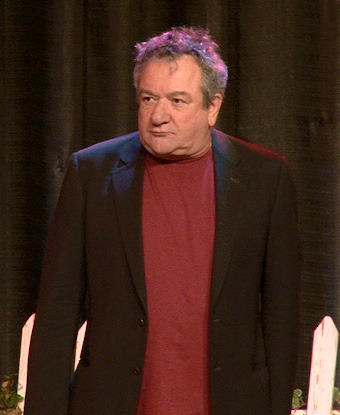
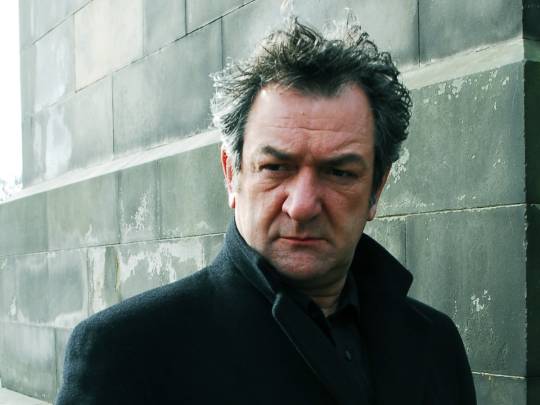
Happy Birthday Kenneth Campbell "Ken" Stott, born on October 19th 1954 in Edinburgh.
One of my favourite actors, as hard-drinking Detective hero of Ian Rankin's popular book he was Inspector John Rebus to me. Ken's Father was Scottish and a teacher, his mum a Sicilian, he went to the famous George Herriots school before going onto to Mountview Theatre School, where the distinguished actor Sir John Mills was president. Fellow Scot Douglas Henshall was also a student of the school. Before leaving Edinburgh Stott had been in a band called Keyhole some of the members of the group would later join the Bay City Rollers.
Ken went on to work with the Royal Shakespeare Company but the pay was poor and he subsidised his earnings by selling double glazing. His first TV role was in Secret Army for the BBC, parts in TV shows throughout his career have included, Taggart (of course) The Singing Detective, London's Burning, Your Cheatin' Heart and Silent Witness. He was insome good films too, The Debt Collector (with Billy Connolly) , Shallow Grave, (with Ewen MacGregor) and Plunkett & Macleane (with Robert Carlyle).
My favourite shows of Ken's have been the brilliant BBC Scotland series, Takin' Over the Asylum in which starred as Double Glazing salesman, but aspiring disc jockey
with David Tennant and Angus Macfadyen,The ITV series The Vice was also a cracking series where he played DI Pat Chappel and The BBC show Messiah, where again he played a cop, DCI Red Metcalfe where he learned sign language for scenes with his screen wife,and Rebus of course, when the show was resurrected in 2006, Stott was a first choice for many as D.I John Rebus, John Hannah had the role in the first incarnation, mainly due to it being made by his own production company.
On film Ken is probably best known for his role as the Dwarf, Balin in The Hobbit trilogy. He is a popular choice for voice work, as narrator for series such as Trawlermen, a documentary following North Sea trawlers, and Send in the Dogs, following the work of Police Officers and their canine partners.
One of my favourite stories about Ken Stott echoes the no nonsense approach of Rebus, on stage during Arthur Miller's A View From The Bridge, he halted the play when a group of teenage schoolkids were misbehaving and disturbing the show, switching from his stage American to his native Scots accent he told the teacher responsible for the children to remove them, or the play would not go on.
The house lights were switched on and there was then a 15-minute stand-off as discussions took place with the offending youngsters.
The audience took the side of Stott and even resorted to chanting 'out, out, out' in extraordinary scenes. Eventually the three culprits and an embarrassed teacher was forced to creep away before the play resumed at the Duke of York's Theatre.
Recently Ken was in the TV series Devils playing professor Wade in the show. Look out for The Dig, a decent Netflix film about an archaeologist dig in England in 1938 also starring Ralph Fiennes.
Ken reprised his role as Chief Superintendent Bob Toal in the second series of Irvine Welsh's Edinburgh set cop show Crime.
Nominated for many awards, he was lifted two Scottish Baftas and a Laurence Olivier Award.
13 notes
·
View notes
Text







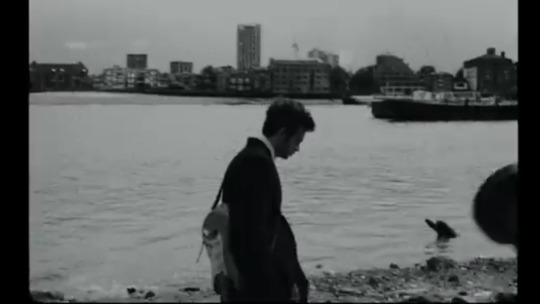
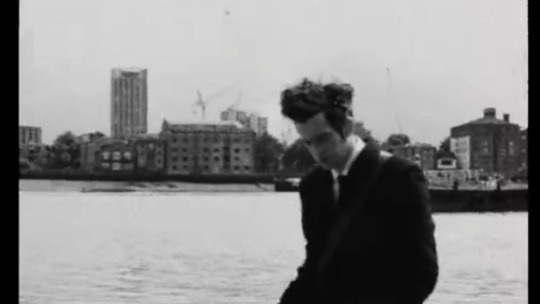
Love, vulnerability & decay
Text: Can true love exist anymore? The 1975’s Matty Healy isn’t sure (But he hopes so), Hannah Ewens, Rolling Stone UK, July 12th 2022
Photos: The 1975’s Matty Healy on social media, supporting artists and 'Being Funny in A Foreign Language', Rolling Stone UK on YouTube, July 18th 2022
#matty healy#being funny in a foreign language#Rolling Stone UK#the 1975#George Daniel#Ross MacDonald#Adam Hann#love#vulnerability#deconstruction#interview#words#I'm almost a month late but I really loved some experts from this interview#mine
135 notes
·
View notes
Text
A small collection
I do still intend to keep writing the other more detailed How to spot guides for each MBTI type individually, but in the meantime, I collected some interviews with several people of each type that you can click through and maybe it helps you see the similarities not just of the people of the same type, but also based on the high functions that they share. I also tried to not exclusively use native English speakers because I’m personally a bit fed up with the anglocentrism of this site and the internet in general (though of course I’m also constrained in my choices here that I can only use people that I know of, which are mostly European), but if I could find some, I included interviews of them speaking both English and their native language. Even if you don’t understand that language, I still recommend looking into those interviews. Not understanding what someone is saying can sometimes actually help focussing on their body language itself.
INTJ:
Margaret Atwood (writer)
Joyce Carol Oates (writer)
David Fincher (director)
Michael Emerson (actor)
Tom Rachman (writer & journalist)
Patrick Salmen (writer, interview is in German)
Martin Sonneborn (satirist, journalist & politician, interview is in German)
ENTJ:
Katie McGrath (actress)
Keira Knightley (actress)
Nicholas Hoult (actor)
Anthony Head (actor)
Elijah Wood (actor)
Daniel Radcliffe (actor)
Tamsin Greig (actress)
Markus Zusak (writer)
Zach Woods (actor, comedian & director)
Malala Yousafzai (education activist)
INTP:
Harald Lesch (physicist, astronomer & science journalist, interview is in German)
Axel Milberg (actor & writer, interview is in German)
Peter Capaldi (actor)
Jane Goodall (primatologist & anthropologist)
Neil Gaiman (writer)
R.H. Thomson (actor)
Rooney Mara (actress)
Matthias Brandt (actor & writer, interview is in German)
Kai Meyer (writer, interview is in German)
ENTP:
David Tennant & Matt Smith (actors)
Hugh Grant (actor)
Tilda Swinton (actress)
Saoirse Ronan (actress)
Eddie Redmayne (actor)
David Mitchell (writer)
Bill Nighy (actor)
Florence Welch (musician)
Louisa Harland (actress)
Richard Ayoade (comedian, writer, director & actor)
INFJ:
Colin Morgan (actor)
Freddie Highmore (actor)
Barkhad Abdi (actor)
James Phelps (actor, since he’s with his twin: he’s the one on the right)
Ewen Bremner (actor)
Amy Acker (actress)
Rohinton Mistry (writer)
Audrey Magee (writer)
Jenny Erpenbeck (writer, interview is in German)
ENFJ:
Emma Thompson (actress & screenwriter)
Wes Anderson (director & writer)
Ulrich Wickert (journalist & writer, interview is in German)
Marshall Curry (director)
Eleanor Catton (writer)
Alissa York (writer)
INFP:
Kristen Stewart (actress)
Hozier (musician)
Rupert Grint (actor)
Asa Butterfield (actor)
Eddie Marsan (actor)
Helen Oyeyemi (writer)
Christopher Annen (musician, interview is in German)
ENFP:
Andrew Garfield (actor)
Dev Patel (actor)
Katherine Parkinson (actress, plus her being a prime example of intuitives barely knowing how to survive)
Michael Sheen (actor)
Jan Philipp Zymny (writer & comedian, interview is in German)
Chris Columbus (director)
Maggie Stiefvater (writer)
Lisa McGee (screenwriter & playwright)
Lars Eidinger (actor, interview is in German)
Hannah Herzsprung (actress, interview is in German)
ISTJ:
Felicity Jones (actress)
Lindsay Duncan (actress)
Famke Janssen (actress, plus an interview in her native Dutch)
Maggie Smith (actress)
Britt Robertson (actress)
Elizabeth Nunez (writer & professor)
Ken Follett (writer)
Vicky Krieps (actress, plus an interview in her native Luxembourgish with subtitles available, and in German and in French)
ESTJ:
Eliza Taylor (actress)
Letitia Wright (actress)
Charles Dance (actor)
Matt Damon (actor & screenwriter)
Sandra Bullock (actress)
Henry Cavill (actor)
Alba August (actress & musician, plus an interview in her native Swedish and Danish)
Alicia Vikander (actress, plus an interview in her native Swedish with subtitles available)
ISFJ:
Gemma Chan (actress & model)
Laura Dern (actress)
Crystal Reed (actress)
Natalia Dyer (actress)
Arthur Darvill (actor)
Jordan Rodrigues (actor & dancer)
ESFJ:
Olivia Colman & Helena Bonham Carter (actresses)
Lupita Nyong’o (actress)
Bradley James (actor)
Scott Moir (figure skater)
John Krasinski (actor, director & screenwriter)
Carey Mulligan (actress)
Emilia Clarke (actress)
Tom Hopper (actor)
Tomi Adeyemi (writer)
Hugh Jackman (actor)
ISTP:
Christoph Waltz (actor & director, plus an interview in his native German)
Harrison Ford & Ryan Gosling (actors)
Ruth Wilson (actress)
Björk (musician, plus an interview in her native Icelandic)
Devon Bostick (actor)
Mikkel Boe Følsgaard (actor, plus an interview in his native Danish)
Evan Peters (actor)
Christopher Lloyd (actor)
Christian Bale (actor)
Peter Maffay (musician, interview is in German)
ESTP:
Zendaya (actress & musician)
Oscar Isaac (actor)
James Acaster (comedian)
Jodie Comer (actress)
Jördis Triebel (actress, plus an interview in her native German with subtitles available)
Stromae (musician, plus an interview in his native French with subtitles available)
Sabaa Tahir (writer)
Tatiana Maslany (actress)
Emilio Sakraya (actor & musician, interview is in German)
Anya Taylor-Joy (actress, plus an interview in her native Spanish)
ISFP:
Santiago Cabrera (actor, plus an interview in his native Spanish)
Ben Howard (musician)
Tessa Virtue (figure skater)
Karen Gillan (actress)
Rachel McAdams (actress)
Gael García Bernal (actor, plus an interview in his native Spanish)
Audrey Tautou (actress, plus an interview in her native French)
Henning May (musician, interview is in German with subtitles available)
Jannis Niewöhner (actor, plus an interview in his native German)
Évelyne Brochu (actress, plus an interview in her native French)
ESFP:
Tom Holland (actor)
Maisie Williams (actress)
Billie Piper (actress)
Robert Sheehan (actor)
Margot Robbie (actress)
Jim Carrey (actor & comedian)
Omar Sy (actor, plus an interview in his native French)
Taika Waititi (director, actor, comedian & screenwriter)
Alexander Rybak (musician, plus an interview in his native Norwegian and Russian with subtitles available for both)
#basically all extroverts are easy to find only the ENFJs join the INs and ISJs in hiding#if you have any suggestions on people you suspect to be an intj please tell me cause i honestly can't find them#i won't apologise but it's kinda funny that i do feel the need to for almost exclusively choosing europeans and only a couple americans#and even non-native english speaking people cause they get swept under the rug typically#the internet is so incredibly america centric first and english speaking centric second and i'm so sick of it#so yeah i'm not sorry for being european on main#i mean eurovision was just two weeks ago and i still haven't fully recovered so that might have influenced me a tad with my choices here#in may i'm european and i'm making it everyone's problem#also i know i keep rambling in the tags about all kinds of stuff in all my posts i'm sorry but i don't think i can stop to be honest#bear with me please#also if anyone has any comments or questions or wants to discuss things they noticed in these interviews hit me up!!#mbti#how to spot#intj#entj#intp#entp#infj#enfj#infp#enfp#istj#estj#isfj#esfj#istp#estp#isfp#esfp#also fyi i'll majorly edit the how to spot an enfj post soon cause making this list i realised i've a blind spot for estps with strong Fe
102 notes
·
View notes
Note
idk if you're still writing that fanfiction paper, but i was going through one of the books i have on fandom (fangirls by hannah ewens) and found the below quote and thought of you!

fictional men written by women >>>>
thank you for this ari !! i've already submitted my paper (and ofc i found a couple of mistakes after doing so but we live lol), but i appreciate that lil book rec and quote !! 🥺
5 notes
·
View notes
Text
ROYAL DISS
Snubbing the King: Why Don’t Big Stars Want to Perform at Charles’ Coronation?
A number of artists have turned down offers to perform at King Charles' coronation in May. Some theorize that the royal family's recent 'PR disasters' are partly to blame
BY HANNAH EWENS
MARCH 1, 2023

King Charles III doesn't understand why no one wants to come to his party. SAMIR HUSSEIN/WIREIMAGE
IN 1997, AFTER attending a Royal Gala evening, Geri Halliwell kissed Prince Charles on the cheek. According to royal protocol and etiquette, you’re only allowed to shake a royal’s hand, so the scandalous moment landed on the front pages of newspapers and went down in pop culture history. Now, instead of daring Ginger Spice to kiss Charles for a second time, The Spice Girls are avoiding him altogether.
The group is among a number of British pop artists who have turned down the opportunity to play at his coronation in May. Adele, Harry Styles, Robbie Williams, and Elton John were also reportedly asked to play and refused the offer. When Rolling Stone asked why, the teams for all those artists declined to comment, bar Elton John’s, who confirmed he was asked but couldn’t play due to scheduling issues. Musicians used to practically line up outside the palace to perform at any major royal event, but that has changed. The public is left wondering: Will any major star agree to play King Charles III’s coronation?
“The Nineties were so different in British pop culture. It was New Labour, everyone was playful and being a bit cheeky,” explains Michael Cragg, author of Reach For The Stars, a book about Nineties and ‘00s British pop. But, Cragg says, “that cheekiness absolutely isn’t here anymore. Now we really want to know who people are and the version of the Royal family that we’ve learned of recently through Prince Harry’s book and how the Prince Andrew scandal was handled: the reality is awful. You could not be the biggest band in the world now and walk up and plant a kiss on them and it still work.”
To perform at a royal event in 2023 would be to align yourself with blatant scandal. The recent allegations regarding Prince Andrew’s relationship with Jeffrey Epstein and an alleged sexual relationship with one of Epstein’s victims are still fresh in people’s minds. And so is Andrew’s disastrous 2019 BBC Newsnight interview about said claims. But before people had a chance to reconcile their feelings about Andrew, Prince Harry and his wife Meghan Markle publicly announced that they were stepping down from royal duties. In the years since, Harry and Markle have levied several accusations against the royal family and the UK press, claiming their respective treatment of Markle led to fears for her mental and physical health. The discourse and growing divide between the couple and the Institution has been well documented in Harry’s 2023 tell-all memoir Spare and the couple’s Netflix series Harry & Meghan.
“The royal family has faced a number of PR disasters in recent times, and anyone performing at the show would have to consider whether there would be a backlash from appearing amongst their fans,” says Simon Jones, PR to Little Mix, Niall Horan, and Louis Tomlinson.
On that same note, it would be a laughingly straightforward decision to decline an offer to perform for many artists. Kingsley Hall of political band Benefits, whose 2022 anti-monarchy single “Flag” was number one on the Official UK vinyl the week of the Queen’s Platinum Jubilee, explains of the British cultural temperature, “We’ve had so much exposure and negative exposure of the Royal family – jubilees, weddings, fallings out, accusations of racism, notable deaths, someone being accused of being a sexual predator – in what I would classify as a short space of time. People are sick of it and probably won’t be involved for that reason.”
For many millennial and Gen Z fans in the UK in particular, Royalism is a dirty idea. Meg, head of a leading British music PR company, notes that both Styles and Adele are at points in their careers where they need to define themselves beyond a successful decade in music. “For them right now, storytelling is really important,” says Meg, whose real/full name has been withheld by request. These big symbolic associations carry a lot of weight and literally go down in history books in bold and underlined. I can understand why there’d be a big PR discussion around artists doing it or not.”
Whereas the public had previously seen the Queen as a longstanding grandmother of the nation, Charles is not the country’s grandfather so much as a blank emblem of the royal family. “ I don’t know what there is to gain for artists by associating with him,” says Meg. “With the Queen, she was fab and glamorous to some people. Charles doesn’t add anything — there’s not a legacy of his that anyone would want to align with. It’s televised, so a lot of people will hear your songs, sure, but in terms of long-term PR strategy, I don’t know if performing would add positively to an artist’s narrative unless they were staunchly pro the monarchy.”
A spokesperson for Buckingham Palace did not immediately respond to Rolling Stone‘s request for comment. Rolling Stone also reached out to the BBC, which is organizing the coronation.
Crucially, this coronation is happening in a year when the UK’s cost of living crisis has dangerously peaked. Ellie (whose real/full name has been withheld by request), founder of a British pop music PR company, says, “Strip back the gold and red cloak, and you have a country where parents are choosing between feeding their kids or keeping them warm. How much money is the coronation costing the taxpayer? It feels like a political statement to play.”
Each artist who declines will naturally have their own political motivations based on their Britishness. As Adele superfan Grace Martha from London notes, Adele is a proud champion of being working class from Tottenham, one of the most ethnically diverse areas in Britain. “The pomp and money this coronation is costing doesn’t represent her values at all,” says Martha. “This issue is so specific to our culture; Americans might think, ‘Oh, she’s from London and a cockney, why wouldn’t she do it?’ But they don’t understand the nuances of different areas, cultures, and identities here. She’s for the ‘everyday person,’ and the everyday younger person in London doesn’t rate the royal family anymore.”
The colonialism of the British empire has been a major discussion point over the past two years. That is behind the struggle to secure A-List British acts, says Hak Baker, a musician from London: “Any situation where I’d bow to an openly racist colonial imperial system that refuses to apologise for its past and eradication of my people’s history I’d rather avoid with a barge pole. We are more aware of the past now. They are not exempt from recognition. I think they’re going to have a hard time.”
Han Mee of Manchester band Hot Milk agrees emphatically, calling it an “outdated institution” that does not represent modern Britain. “Leave it in the past, it’s as old, aged, and expensive as the whiskey that props it up but without the strength and merriment,” she says. “I liked Liz, but it should have died with her – the coronation is a kick in the teeth when this country has never been more of a shit show.”
The real question is: Why do the royals need this entertainment value at all? “No one’s talking about the date or the guests,” considers Meg. “The big headlines around the coronation right now are which musicians are in and which musicians are out, which underlines the importance of music and what the symbolism is of an endorsement from one of these megastar artists.” It appears that in 2023 the royal family needs musicians more than musicians need them.
#abolish the monarchy#king charles lll#prince harry#royals#british royal family#prince andrew#king charles the cruel
9 notes
·
View notes
Text

“Yungblud looks like Beelzebub cast by Tim Burton, the Joker dressed in Hot Topic or Sid Vicious signed to a modelling agency” - Hannah Ewens for Rolling Stone Cover
#yungblud#bhc#black hearts club#rolling stone magazine#rolling stone uk#tom pallant#dominic harrison#dom harrison
2 notes
·
View notes
Note
bookish survey! A, C, H, I, O, Q, R, Z
Author You’ve Read The Most Books From - I just answered this one but in addition to my previous answers I also read a lot of John Green's novels and books written by members of Motley Crue, if you can lump them together as one collective
Currently Reading - my current main book is Glamorama by Bret Easton Ellis. I've also got Sylvia Plath's Journals, The Scarlet Letter, and That's Your Lot by Limmy on the go as my non-fiction, e-book and short stories for travelling books...
Hidden Gem Book - I read Fangirls by Hannah Rose Ewens last summer and adored it. It's a non-fiction study of fangirl behaviour and covers queuing all day outside gigs, calling your faves daddy in the comments of their insta pics, travelling to the US for a glimpse of Courtney, going on walks around the places Amy Winehouse hung out and so much more and I saw so much of myself and my loved ones in it.
Important Moments of Your Reading Life - I answered this one already too but adding switching Morrissey's Autobiography (so boring) for How To Be A Woman by Caitlin Moran and having to put it down so I didn't start laughing aloud on the train. I think that was one of the first feminist books I read and it was so much fun.
One Book That You Have Read Multiple Times - this is where I have to shout out to Coal Black Mornings by Brett Anderson. I devoured the library copy before going to his book signing, I've had him read it to me via audiobook, I've read the paperback on my way to hear him talk about the sequel. It's now battered and full of page markers as I used it as a London guidebook, walking the streets he walked and seeing the places he lived and loved; it's invaluable to me.
Quote From A Book That Inspires You/Gives You Feels - it's lame because it's from a John Green novel but it's true: "what a treacherous thing it is to believe that a person is more than a person".
Reading Regret - I didn't read much in high school at all, only YA novels about girls who were rock guitarists or goth teenagers or music biographies. I skimmed most of the books I had to read for classes and just fell out of love with reading in general for a few years.
ZZZ-Snatcher (last book that kept you up WAY late) - Dracula: I read it as part of Dracula Daily along with the rest of Tumblr and it kept me going on the long tube journeys out to the hotels I could afford for last minute Suede jaunts. It didn't keep me up necessarily because it was a page-turner but it kept me from falling asleep on the train!
0 notes
Text
An exclusive extract from 'Fangirls', a new book by Hannah Ewens.
41 notes
·
View notes
Photo
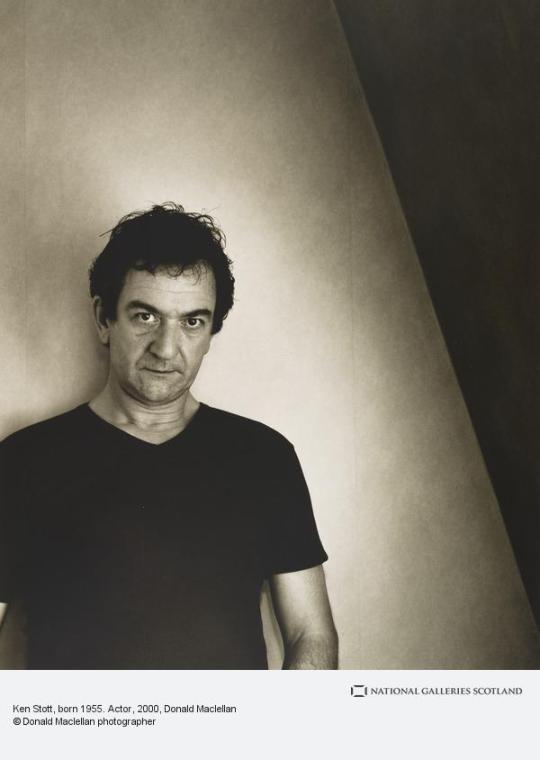
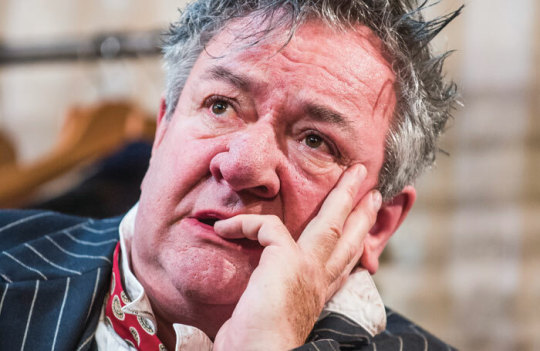

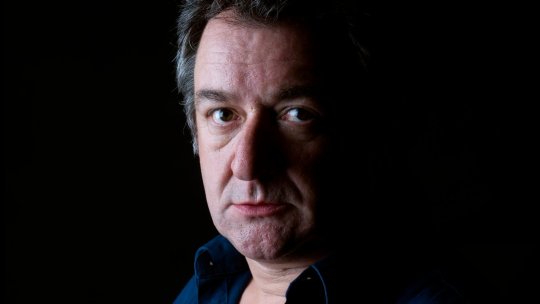

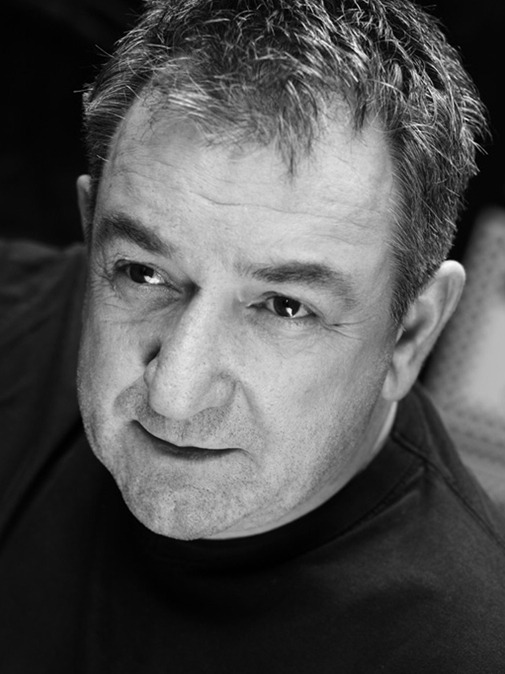
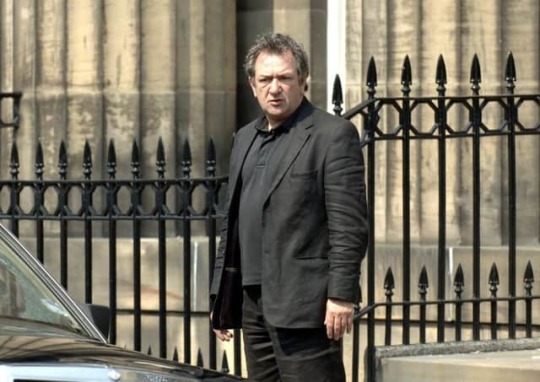
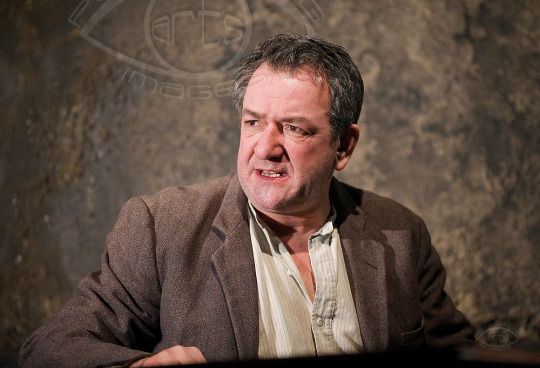

Happy Birthday Kenneth Campbell “Ken” Stott, born on October 19th 1954 in Edinburgh.
Born in 1955 in Edinburgh he was educated at George Heriot’s School where his father was the Head of the English Department, his mum worked as an Italian literature professor at nearby Edinburgh University. The couple frequently hosted actors, singers, musicians and other creative types as part of their involvement with the Scots Italian Circle, a cultural exchange organization that his dad was president of.
Before leaving Edinburgh Stott had been in a band called Keyhole some of the members of the group would later join the Bay City Rollers.
Ken went on to work with the Royal Shakespeare Company but the pay was poor and he subsidised his earnings by selling double glazing. His first TV role was in Secret Army for the BBC, parts in TV shows throughout his career have included, Taggart (of course) The Singing Detective, London’s Burning, Your Cheatin’ Heart and Silent Witness. He was insome good films too, The Debt Collector (with Billy Connolly) , Shallow Grave, (with Ewen MacGregor) and Plunkett & Macleane (with Robert Carlyle).
My favourite shows of Ken’s have been the brilliant BBC Scotland series, Takin’ Over the Asylum in which starred as Double Glazing salesman, but aspiring disc jockey with David Tennant and Angus Macfadyen,The ITV series The Vice was also a cracking series where he played DI Pat Chappel and The BBC show Messiah, where again he played a cop, DCI Red Metcalfe where he learned sign language for scenes with his screen wife, and Rebus of course, when the show was resurrected in 2006, Stott was a first choice for many as D.I John Rebus, John Hannah had the role in the first incarnation.
On film Ken is probably best known for his role as the Dwarf, Balin in The Hobbit trilogy. He is a popular choice for voice work, as narrator for series such as Trawlermen, a documentary following North Sea trawlers, and Send in the Dogs, following the work of Police Officers and their canine partners. Ken’s last movie was the Netflix film, The Dig, a true story based on an archaeological dig in Suffolk in 1938, it is a charming gentle film and a joy to watch, Stott plays archaeologist Charles Phillips.
One of my favourite stories about Ken Stott echos the no nonsense approach of Rebus, on stage during Arthur Miller’s A View From The Bridge, he halted the play when a group of teenage schoolkids were misbehaving and disturbing the show, switching from his stage American to his native Scots accent he told the teacher responsible for the children to remove them, or the play would not go on.
The house lights were switched on and there was then a 15-minute stand-off as discussions took place with the offending youngsters.
The audience took the side of Stott and even resorted to chanting ‘out, out, out’ in extraordinary scenes. Eventually the three culprits and an embarrassed teacher was forced to creep away before the play resumed at the Duke of York’s Theatre.
Stott was recently in the Scottish police drama, Crime, along with fellow Scots’ Joanna Vanderham, Dougray Scott, Allison McKenzie, and the excellent Jamie Sives from the BBC series Guilt. Ken is signed up to return to as Detective Chief Superintendent Bob Toal in Crime, but has been on our screens in the Sky drama series Devils, appearing in 7 episodes as Professor Philip Wade.
16 notes
·
View notes
Text
Today In Reading
I finished Hannah Ewens’ Fangirls and started Lynne Segal’s Radical Happiness: Moments of Collective Joy.
A chapter and a half into the latter, I realise that every single positive experience Ewens describes in Fangirling is a very specific and powerful example of Collective Joy.
1 note
·
View note
Quote
To be a fan is to scream alone together.
Hannah Ewens
0 notes
Text

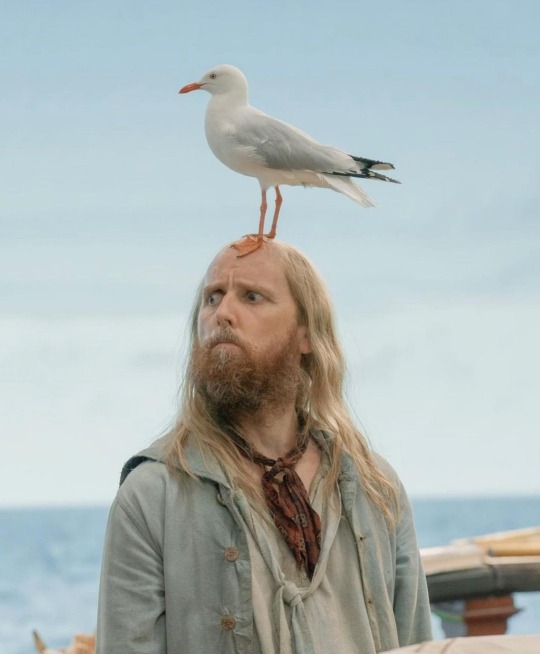
Via Hannah Greene's Instagram
93 notes
·
View notes